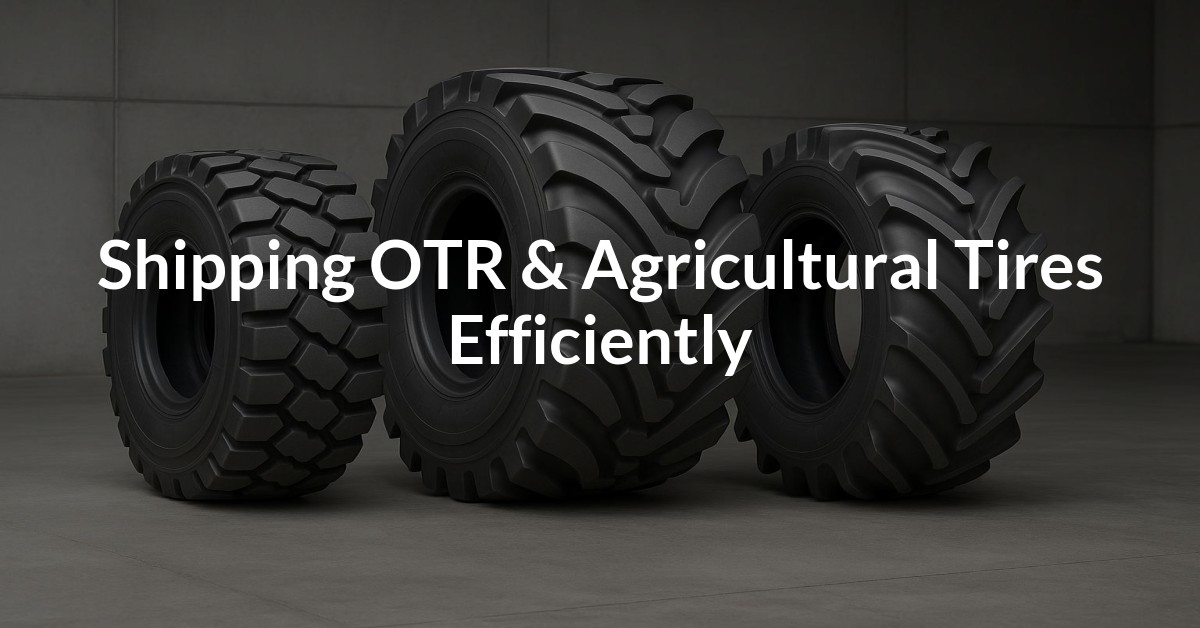Shipping power generation equipment is no small feat—it’s a high-stakes operation that keeps the energy sector humming. From massive turbines to hefty transformers, this machinery is the backbone of power production, and getting it from point A to point B requires more than just a big truck. It demands precision, expertise, and a deep understanding of logistics. Whether you’re in renewables, nuclear, or traditional energy, transporting these oversized loads is a puzzle worth solving. In this article, we’ll break down the complexities of shipping power generation equipment, tackle the biggest challenges, and show how Freight SideKick can be your ace in the hole for seamless freight solutions.
What is Power Generation Equipment?
Power generation equipment includes the heavy hitters of the energy world—think gas turbines, steam generators, wind turbine blades, and electrical transformers. These are not your average shipments; they’re often oversized, overweight, and incredibly sensitive to mishandling. Used in power plants, renewable energy farms, and industrial facilities, this machinery is critical to keeping the lights on. But their sheer size and specialized nature mean they can’t just be tossed onto a flatbed and sent on their way. Shipping them involves navigating a maze of regulations, permits, and logistical hurdles.
Types of Power Generation Equipment and Their Shipping Needs
Not all power generation equipment is created equal. Each type comes with its own set of shipping quirks and requirements. Here’s a closer look at the main categories:
- Turbines: Whether gas, steam, or wind, turbines are colossal. A single blade for a wind turbine can stretch over 200 feet long! Shipping often requires specialized trailers and route planning to avoid low bridges and tight turns.
- Generators: These convert mechanical energy into electricity and can weigh hundreds of tons. Securement is key—any shift during transit could spell disaster.
- Transformers: Vital for stepping up or down voltage in power distribution, transformers are heavy and often require cranes for loading and unloading. Their internal components are delicate, demanding protection from shock and vibration.
- Auxiliary Equipment: This includes cooling systems, control panels, and other support gear. While smaller, these items often need to be shipped alongside larger components, adding complexity to logistics.
Each piece of equipment requires a tailored approach, from choosing the right mode of transport (think flatbeds, lowboys, or even barges) to ensuring compliance with weight and dimension restrictions.
Key Challenges in Shipping Power Generation Equipment
Transporting power generation equipment isn’t for the faint of heart. It’s a logistical tightrope walk with plenty of obstacles. Let’s unpack the biggest challenges:
- Oversized Dimensions and Weight: Most equipment exceeds standard load limits, requiring specialized trailers like multi-axle lowboys or extendable flatbeds. A single generator might weigh over 300,000 pounds—way beyond typical freight.
- Regulatory Maze: Transporting oversized loads means dealing with a patchwork of state, federal, and international regulations. Permits for wide loads, escort vehicles, and restricted travel times (often limited to daylight or non-peak hours) are just the tip of the iceberg.
- Environmental Sensitivity: Many components are vulnerable to humidity, temperature swings, or dust. A transformer exposed to moisture during transit could suffer internal damage, costing millions to repair.
- Infrastructure Limitations: Not every road, bridge, or port can handle the weight or size of these shipments. Route surveys are essential to dodge low overpasses or weak infrastructure.
- Coordination Complexity: A single power plant project might involve dozens of shipments arriving from multiple suppliers worldwide. Syncing these deliveries to avoid delays or storage issues is a logistical ballet.
These hurdles highlight why shipping power generation equipment isn’t a DIY job. It takes a seasoned freight partner to navigate the red tape and keep your cargo safe.
Best Practices for a Smooth Shipping Process
Want to avoid headaches when shipping power generation equipment? Follow these battle-tested best practices to keep your project on track:
- Pre-Shipment Assessment: Measure twice, ship once. Know your equipment’s exact dimensions, weight, and handling needs well in advance. This helps in selecting the right equipment and avoiding surprises.
- Partner with Specialized Carriers: Not all trucking companies can handle a 400-ton load. Work with carriers experienced in heavy haul and oversized freight to ensure compliance and safety.
- Secure Permits Early: Oversized load permits can take days or weeks to process, especially for cross-state or international shipments. Plan ahead to avoid costly delays.
- Protect Against the Elements: Use weatherproof tarps, shock-absorbing cradles, and climate-controlled containers if needed. A little upfront investment can prevent major damage.
- Route Planning: Conduct detailed route surveys to identify potential obstacles like narrow roads or weight-restricted bridges. Sometimes, the shortest path isn’t the smartest.
- Real-Time Communication: Keep all stakeholders—shippers, carriers, and receivers—in the loop. Delays or detours happen, and clear communication minimizes disruptions.
By sticking to these guidelines, you can mitigate risks and ensure your equipment arrives ready to power up.
Why Freight SideKick is Your Go-To Partner
At Freight SideKick, we understand that shipping power generation equipment isn’t just logistics; it’s a mission. That’s why we’ve tailored our services to tackle the unique demands of the energy sector. Here’s how we’ve got your back:
- Expert Guidance: Our logistics pros know the ins and outs of heavy haul freight. From turbines to transformers, we’ll craft a shipping plan that fits your needs.
- Physical Presence: With boots on the ground, our experienced team can come onsite to oversee every detail of your project. We coordinate logistics, handle paperwork, and troubleshoot any issues in real time, keeping your project running smoothly and on schedule.
- Vetted Carrier Network: We work with top-tier carriers who specialize in oversized and overweight loads, ensuring safety and compliance every mile of the way.
- Permit and Compliance Support: Forget the paperwork hassle. We’ll handle the permits, escorts, and regulatory requirements so you can focus on your project.
- Real-Time Tracking: Stay in the know with live updates on your shipment’s status. Our live tracking system keeps you informed every step of the way.
- Custom Solutions: No two projects are the same. We offer personalized freight solutions, whether you’re moving a single generator or outfitting an entire power plant.
With Freight SideKick, you’re not just getting a shipping service—you’re gaining a partner dedicated to powering your success. Let us take the weight off your shoulders.
Quick Stats on Power Generation Equipment Shipping
| Equipment Type | Average Weight (Tons) | Typical Transport Method |
|---|---|---|
| Gas Turbine | 200-400 | Multi-Axle Lowboy Trailer |
| Wind Turbine Blade | 10-20 per blade | Extendable Flatbed |
| Electrical Transformer | 100-300 | Specialized Heavy Haul Trailer |
| Generator | 150-350 | Lowboy or Rail (if feasible) |
These figures are approximate and vary based on specific models and manufacturers, but they illustrate the sheer scale of these shipments. Planning for such weights and dimensions is critical to avoid logistical hiccups.
Conclusion: Powering Through Logistics Challenges
Shipping power generation equipment can be a beast of a task, blending oversized cargo challenges with high-stakes precision. From navigating regulatory jungles to protecting sensitive machinery, every step requires careful planning. But with the right strategies—and the right partner—you can turn a daunting process into a well-oiled machine. At Freight SideKick, we’re here to help you move the equipment that powers the world, one shipment at a time.
Personalized Assistance
Get a quote today, call 877-345-3838, or email us at support@freightsidekick.com.











